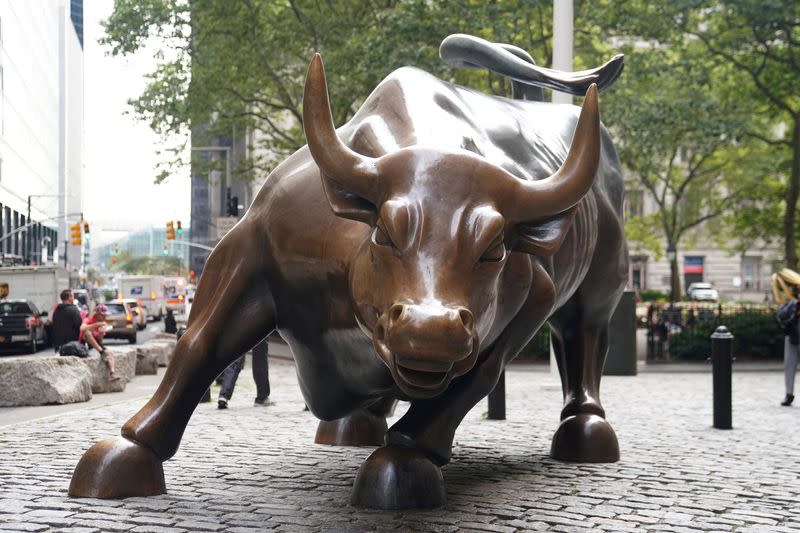Bull market in view after S&P 500 hits fresh year-high

By Saqib Iqbal Ahmed
NEW YORK (Reuters) - The bull is nearly loose.
The S&P 500's feverish late-year rally has brought the index to its highest closing level of 2023, leaving it just 4.2% away from the all-time peak reached in January 2022.
A close above 4,796.56 on the S&P 500 would confirm that the index has been in a bull market since bottoming out on Oct. 12, 2022, by one commonly used definition. The benchmark index is up 19.7% for the year and has risen 28.5% from its October 2022 low.
A look at bull markets of the past suggests that investors should expect stocks to take a breather before marching higher.
At the same time, plenty of obstacles remain for U.S. stocks, including the possibility that the Fed’s rate hikes chill the economy, upending the soft-landing hopes that have propelled equities higher.
SMALLER THAN YOUR AVERAGE BEAR
With the S&P 500 closing at a new year-high on Friday investors are close to getting confirmation that the bear market that started in January 2022 is over.
Some investors define a bear market specifically as a decline of at least 20% in a stock or index from its previous peak. By that definition, the bear market that began when the S&P 500 hit its previous record on Jan. 3, 2022 was not particularly painful.
The S&P 500 closed down 25.4% at its lowest point, making this the fourth shallowest bear market experienced by the index since 1928, according to data from Yardeni Research.
At the same time, at 282 calendar days, it was somewhat shorter than the average bear market length of 341 days, based on data from Yardeni Research going back to 1928.
STRONG LIKE BULL
History also suggests that bull markets tend to feed off themselves, as strong stock performance pulls investors off the sidelines and boosts appetite for risk.
Over the past 50 years, stocks have witnessed an average gain of nearly 260% during the six bull markets that have occurred.
NOT SO FAST
Of course, stocks rarely rise in a straight line. Over the last 50 years, the S&P 500 has risen an average of 16% in the three-month period leading up to a bull market.
By contrast, the S&P 500 has logged average gains of just 0.2% and 2.0%, in the one-month and three-month period after a bull market is confirmed.
SPEED BUMPS AHEAD?
At the same time, there is no shortage of factors that could slow a rally or hurt investor confidence.
Many investors are watching the U.S. economy: Expectations of an economic soft-landing, where the Fed manages to cool inflation without badly hurting growth, have supported the rally in stocks. But signs that the Fed’s 525 basis points of rate increases are slowing growth more than expected could argue for a more cautious approach to stocks and other so-called risky assets.
One recession signal, the inverted yield curve, continues to hang over investors. Yields on two-year Treasuries have stood above those on 10-year Treasuries since July 2022. The 2/10 year yield curve has inverted six to 24 months before each recession since 1955, a 2018 report by researchers at the San Francisco Fed showed.
(This story has been refiled to clarify that the reference to new year high is on a closing basis in paragraph 2)
(Reporting by Saqib Iqbal Ahmed; Editing by Ira Iosebashvili and Lisa Shumaker)

 Yahoo Finance
Yahoo Finance 